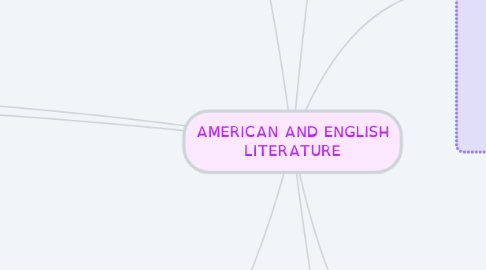
1. The United States of America freed itself from the mercantilist constraints imposed on it by the metropolis when it was a colony and embarked on a process of economic and territorial expansion.
2. American culture and history
2.1. 1492 - Pre Columbian
2.1.1. Colon arrived to America
2.2. Customs
2.2.1. pottery and goldsmithing
2.3. European Colonization
2.3.1. North America, Central America and in the Andean area of South America.
2.4. 1620
2.4.1. November 11th: Pilgrims formed Plymouth
2.5. Abraham Lincoln
2.5.1. Thanksgiving Day was officially proclaimed by President Lincoln in 1863, to be celebrated on the last Thursday of November.
2.6. Officially thanksgiving day
3. CUSTOMS & TRADITIONS
3.1. Principal custom of the American
3.1.1. Clothing styles vary by social status, region, occupation and climate. There are a number of foods that are commonly identified as American, such as hamburgers, hot dogs, potato chips, macaroni and cheese, and meat loaf. Americans work way to many hours
3.2. American Traditions over the world
3.2.1. Some traditions come from USA in the world are: Christmas Baby Showers Bachelor/Bachelorette Parties Black Friday Halloween
3.3. American Melting pot
3.3.1. USA is the melting pot it i formed by immigrants came from all over the world.
3.4. Viewed from the outside
3.4.1. USA provide a common channel of communication for people worldwide. An estimated 2 billion speak some form of English, most of them influenced by American English.
4. Consequence of United States Independence
4.1. In 1941 Thanksgiving Day was officially declared to be celebrated on the fourth Thursday of November.
4.2. From the economic point of view
4.2.1. The United States of America freed itself from the mercantilist constraints imposed on it by the metropolis when it was a colony and embarked on a process of economic and territorial expansion.
4.2.2. From the social point of view
4.2.2.1. The bourgeoisie assumed the leadership of a moderm class society while other states remained still anchored in the states society.
4.2.3. From the international point of view
4.2.3.1. The first example of decolonization emerged.
4.2.4. From the political-ideological point of view
4.2.4.1. The first liberal revolution was consummated, wich allowed the most advanced ideas of the Enlightenment to become a reality.
5. Vikings arrived
5.1. 1021 is the year the Vikings settled in America.
5.2. year 1000
5.2.1. Vikings had gone from Greenland to North America
5.3. year 471
5.3.1. They would have been the first Europeans on the continent some 500 years before Christopher Columbus.
5.4. year 985
5.4.1. According to "The Saga of the Greenlanders", the first to arrive in America was Bjarni Herjojfsson
5.5. year 1001
5.5.1. Vikings had gone from Greenland to North America
5.5.2. In the Saga of Erik "The Red" Leif Eriksson is described as first arriving in Vindland
6. Spanish Conquest
6.1. In the XV century, Christopher Columbus began the conquest of America.
6.2. It first arrived in the Americas in 1492
6.3. Juan Ponce de León discovered Florida on March 27, 1513.
6.4. Legend has it that Juan Ponce de Leon was looking for the fountain of youth, better known as the island of Bimini.
6.5. After Ponce de León's death, various expeditions continued to explore.
6.6. Spanish hands founded St. Augustine in 1565.
7. Independece & Revolution
7.1. 1775&1781 War conflict that pitted the 13 original British Colonies in North America against the Kingdom of Great Britain.
7.2. Ending with the British defeat at the Battle of Yorktown and the signing of the Treaty of Paris.
7.2.1. The conflict lasted seven years. The Treaty of Paris was signed two years later, on September 3, 1783.
7.2.2. Most of the war was fought in New York, New Jersey and South Carolina.
7.2.3. Thirteen original British colonies in North America were involved in the war against the United Kingdom.
7.2.4. In the peace treaty, Great Britain recognizes U.S. independence.
7.2.5. - Independence of the 13 colonies. - Other denial to the new nation of territory north of Florida, south of Canada and east of the Mississippi River.
